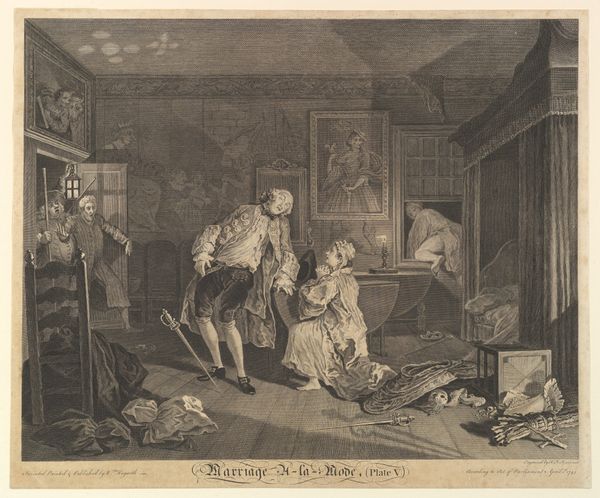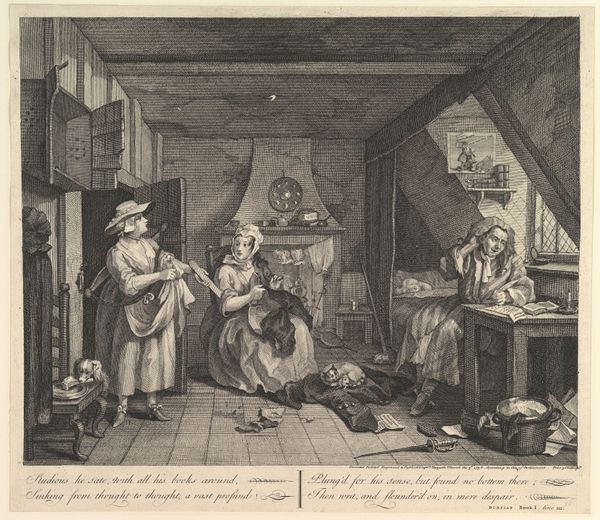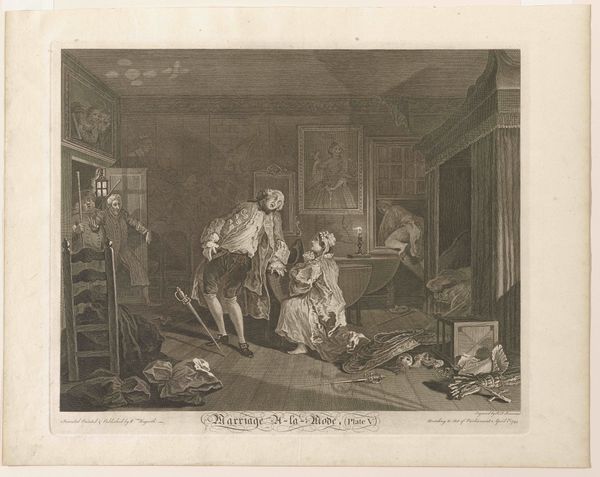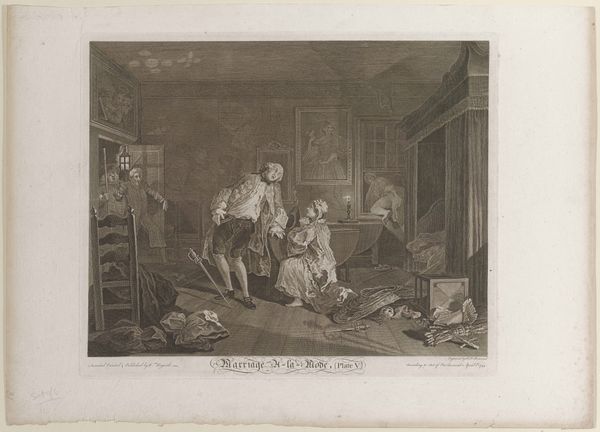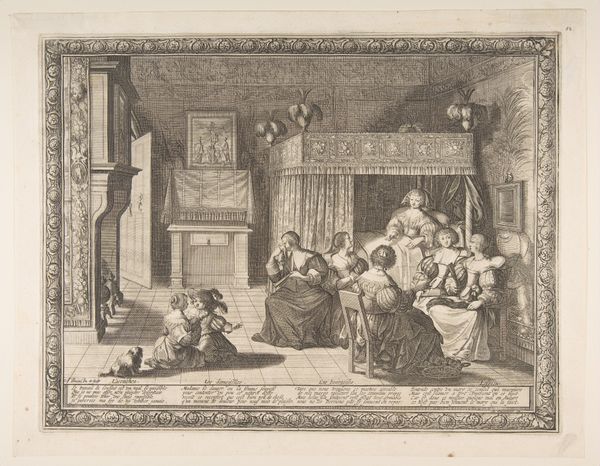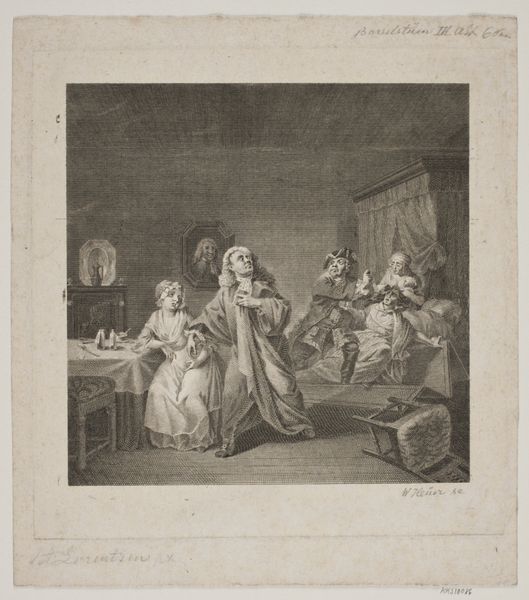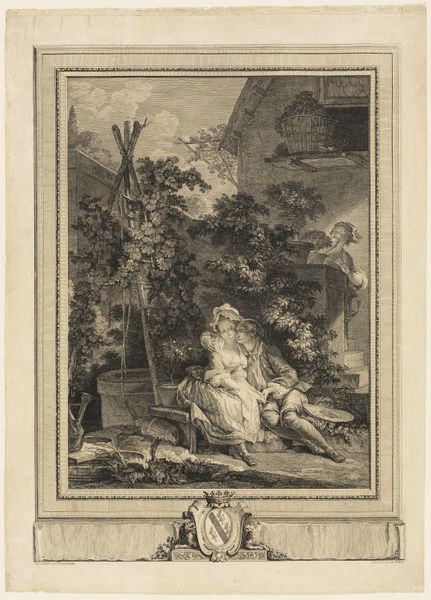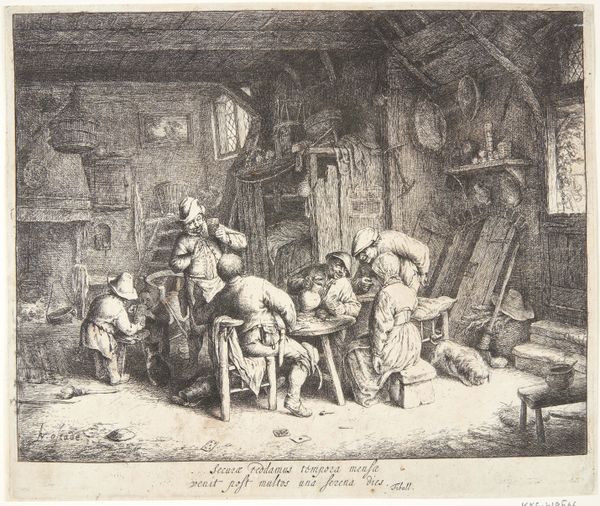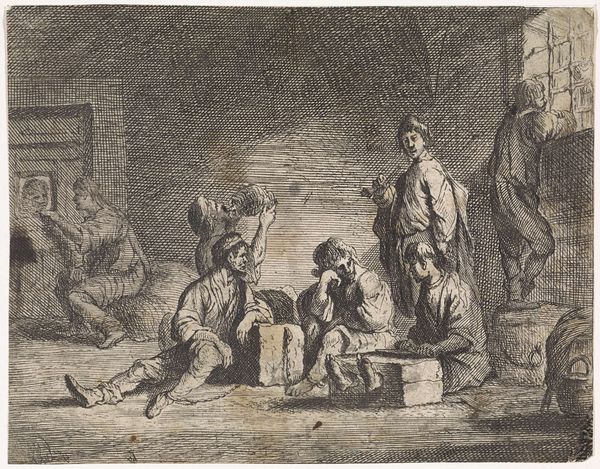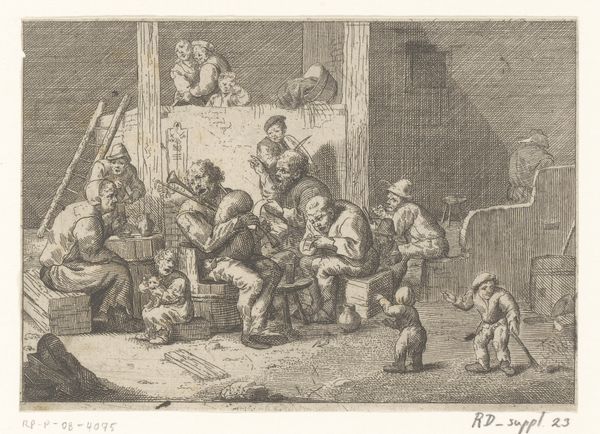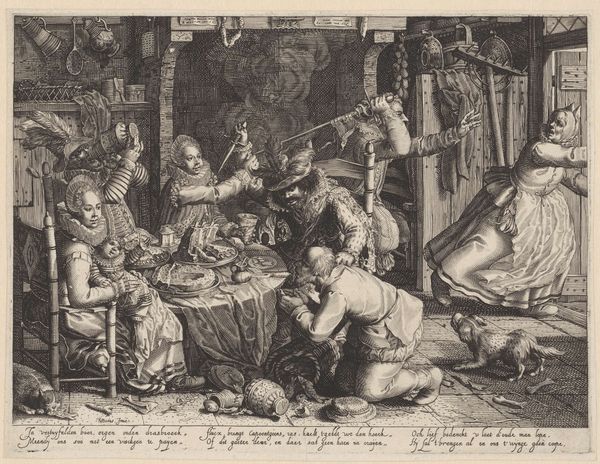![Illustration til Adam Olearius, “Persianischer Rosenthal von einem Sinnreichen Poeten Schich Saadi […]”, Schleswig 1660 by J. Muller](/_next/image?url=https%3A%2F%2Fd2w8kbdekdi1gv.cloudfront.net%2FeyJidWNrZXQiOiAiYXJ0ZXJhLWltYWdlcy1idWNrZXQiLCAia2V5IjogImFydHdvcmtzLzZkNGQyNDRhLWI3MTctNDBhYS04MTE0LWM4Y2UyZDI5ZDA4OS82ZDRkMjQ0YS1iNzE3LTQwYWEtODExNC1jOGNlMmQyOWQwODlfZnVsbC5qcGciLCAiZWRpdHMiOiB7InJlc2l6ZSI6IHsid2lkdGgiOiAxOTIwLCAiaGVpZ2h0IjogMTkyMCwgImZpdCI6ICJpbnNpZGUifX19&w=3840&q=75)
Illustration til Adam Olearius, “Persianischer Rosenthal von einem Sinnreichen Poeten Schich Saadi […]”, Schleswig 1660 1660
0:00
0:00
drawing, print, ink
#
drawing
#
narrative-art
#
baroque
# print
#
landscape
#
ink
#
genre-painting
Dimensions: 102 mm (height) x 132 mm (width) (bladmaal)
Curator: Let's discuss this fascinating print, an illustration made by J. Muller in 1660. It served as an illustration for Adam Olearius's "Persianischer Rosenthal," printed in Schleswig. It employs ink and exists as a detailed drawing, demonstrating Baroque style, showcasing elements of landscape and genre painting alongside narrative art. Editor: The contrast in textures and perspectives immediately catches the eye. The stark, linear interior against the softer, more romantic landscape beyond. I’m intrigued by how this single scene embodies such different worlds—the domestic, constrained space versus the seemingly open, public one. Curator: Precisely! The juxtaposition is crucial. Notice the meticulous detail in the depiction of everyday objects within the interior – the shoes cast aside, the simple pottery. The very act of printing makes Olearius’ text accessible and reproducible, disseminating these Persian tales and images to a wider audience, influencing the imagination of people who perhaps never interacted with such themes. What stories are being told through distribution? Editor: And who has access to this book? Is it a merchant, a scholar, or a noble with global aspirations? There’s an interesting tension at play. The indoor setting shows women while outdoors reveals a journeying crowd. I notice the woman inside the room seems confined compared to the man beside her: her social and political agency is mediated by this architectural divide. We have gender and class politics interwoven with geographic imagination. Curator: We might consider the conditions of the engraver and printer to begin understanding its materiality and wider dissemination: Was Muller paid well? Where was he trained? How widely did these texts circulate among varying classes and people? What's the interplay between text and image in constructing an understanding of "the other"? Editor: That's vital to consider. Understanding its making is fundamental. Curator: Well, this work reminds me that art is rarely simply representational. It’s embedded within a web of social, material, and intellectual exchange. It opens questions about how cultural products helped shape European perceptions during a period of intense exploration and colonization. Editor: Indeed. Looking at the material realities—production, distribution, and readership—adds essential layers of understanding, particularly given the power dynamics at play between Europe and the East at that historical moment.
Comments
No comments
Be the first to comment and join the conversation on the ultimate creative platform.
